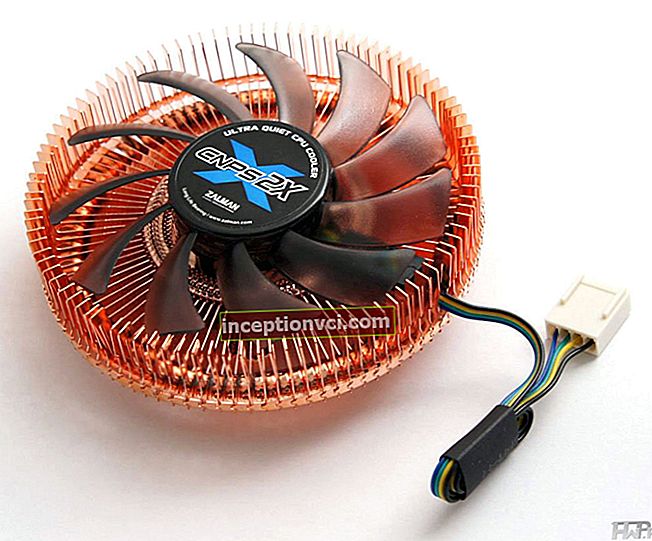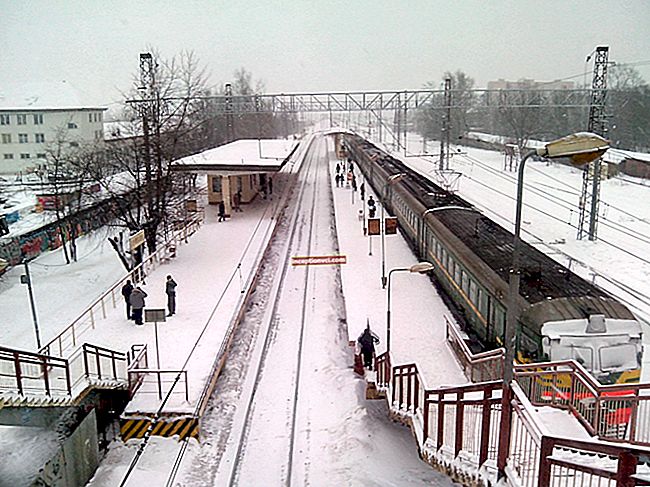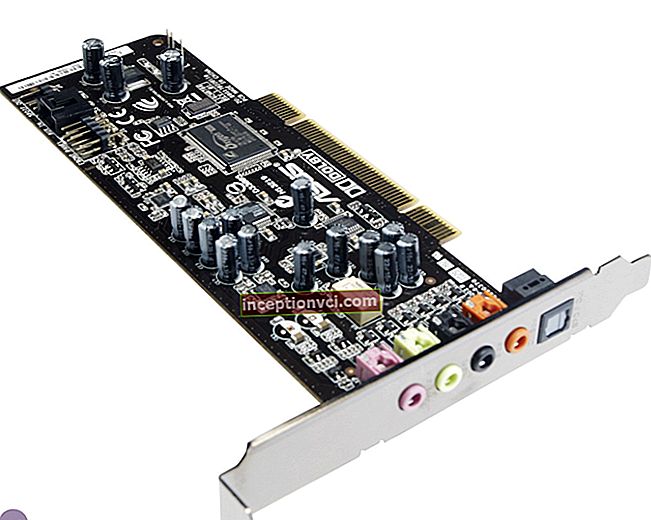How to choose the right cross-country ski?
Sometimes it is worth thinking about the fact that winter can bring us not only colds, slush and cold. Having reconsidered our attitude towards it, we will understand that the winter period can give good health, joy and, in the long term, longevity. You just have to forget about thermometers outside the windows, warm clothes and medicines, and think about fresh crisp snow, ate in white decoration and how you can usefully spend the winter season, leaving pleasant memories in your soul.
Not sure how to do this? We will help you!
It has long been known and there is a method available to most people. In order to usefully spend the winter season, you need to ski! It is about them that we want to talk in this article.
Many of us have known skiing since childhood. Someone remembered them as heavy wooden structures with rubber bands, the terrible brainchild of the then sports industry and the favorite tool of the physical inquisitor. Others were more fortunate, and they owned and used their own skis, graceful, well-groomed and, as a result, light and fast. And one and the other, in our opinion, it will be useful, at least, to refresh their knowledge, or to acquire a completely clear and correct idea of what is cross-country skiing, what they are, with what characteristics and how they generally work.
So, skis. For all the seeming simplicity of the design, they are not so simple.
Skis were invented a long time ago, but even today, intensive painstaking work continues on improving them so that they become more reliable, lighter and, of course, faster. And it all began with the so-called - snowshoes. These were simple structures made of vines or other suitable material. In them it was possible, without falling into deep snow, to move on it. This is the first task of skis. The second - the accelerated movement on this very snow, apparently, was solved with the help of the geometry of the ski, which migrated from the sled runners. Although, everything could have happened and vice versa - it's not about historical facts, but about the design of the ski. And it combines three main tasks - increasing the foot support area so as not to fall into the snow, sliding on it with one ski and simultaneously pushing off the snow with another. The trick is that the ski must have both frictional and antifriction properties at the same time. A very ingenious decision of our ancestors was to attach tough directional fur to the lower ski surface. It bent down when sliding forward and did not allow the ski to slide backward (this process is called ski kickback). It is clear that such a solution has long sunk into oblivion and today in cross-country skiing everything is left to the mercy of geometry. The figure is very clearly illustrated cross-country skiing mechanics.
The toe and heel of the ski are sliding parts. At the moment when the unloaded leg moves forward, they account for the entire area of support and approximately half of the total weight of the skier. The contact of the middle part (block) with the surface of the snow cover occurs only at full load on the leg, which occurs at the moment of repulsion from the snow. It is the last that becomes the frictional ski element that allows you to push off and at the same time prevents rollback. In fairness, it should be noted that this division is not at all a dogma. For example, in skating skis, which we will talk about a little later, their entire surface is sliding.
Also a necessary element of a cross-country ski is a longitudinal groove that runs through its entire lower part. With its help, the longitudinal stability of the ski is achieved during its movement.
XSki characteristics.
The most obvious and perhaps the most important characteristic of a ski is its height. There are generally accepted formulas for choosing a size - the height of a skier, plus 25-30 cm when using a classic run (stroke) and a little less - plus 10-15 cm when using a skate. But, such a statement can be called fair only at first glance. First of all, such calculations will become the most correct for people with an average height, and secondly, the indicator of ski stiffness turns out to be much more important in practice, namely, their ability to maintain and correctly change shape in the presence of appropriate loads. Let's go back to the picture. Stiffness determines the ski's ability to withstand about half of the skier's weight, excluding the contact of the shoe with the snow, when sliding and bend to the required state, with the ski fully loaded, that is, at the moment of push. How to find out the stiffness of a ski? There are several ways. The most optimal, in our opinion, is the first one - with the use of a special tool - a flextester, consisting of a dynamometer, a ski rack and a probe, 0.2 mm thick. A similar tool is available in every sports store that values its name. Using the second method, the skis must be checked by hand. It is believed that the strength of the hand of an ordinary person (without special training) is equal to half the weight of this very person, which means that you just need to squeeze a folded pair of skis with your hand, and then take an ordinary sheet of writing paper and hold it between the blocks. The third way is a little more complicated. Here you need to hold the same sheet under the ski, which lies on the floor and is appropriately loaded. All these methods are designed to find out whether the skis on which you choose will show themselves on the track as it should, or the acquisition will "please" with an easy rollback or a hard move. There is, however, one trick - if there is enough height and weight and it is difficult to choose a pair for height / stiffness, then it is better to choose longer skis, since they are usually tougher and it will be easier to get into the required characteristics with them.
In addition to length, skis also have a second linear dimension - width. Together, they provide the area of the ski support surface and, accordingly, the specific pressure on the snow cover.
Of great importance is material from which the skis are made.
Most of the manufacturing firms use combined structures consisting of plastic, wood, and polymer materials. More expensive models use materials used in the space and aviation industries. The very question "What are the skis made of" does not directly affect their inherent characteristics and properties. It would be more correct to say that it determines the parameters of their weight, rigidity and operating conditions. For example, the popular brand Fischer "builds" its models in the image of a puff pastry, reinforcing the cellular structure with carbon fiber and at the same time achieving record weight loss rates.
Please note that ski performance and performance are not determined solely by the product you bought from the store. A considerable part of their parameters will be determined and changed by grease, which is applied to non-sliding and sliding surfaces. But already on the materials of manufacture it will depend on how capable the skis are to absorb and hold lubricants on their surface.
Lubricants and the principles of their application is an extensive topic and deserves a separate article. For now, we will only limit ourselves to explaining that the sliding lubricant should be applied to the smooth surface of the toe and heel of the ski, and the non-slip lubricant should be applied to a rough or porous shoe.
By the way, there is such a variety of skis as models that structurally have a rough shoe, such as "an option for the lazy."The corresponding surface of these skis is initially endowed with the necessary frictional properties and (almost) does not need additional preparation.
It should be noted that this is not always a plus, but for ordinary skiing, without racing for records, this option is entirely suitable.
An important point when choosing skis is type of mountsfor which they are intended. Today, there are three main types of cross-country ski bindings - "75 mm" or fastening by the welt, "SNS" - the system from Salomon and NNN / NIS or from Rottefella (such are put by Rossignol, Fischer and a number of other brands). The first two types have long become obsolete, but are the most affordable, the second and third are the developments of two different manufacturers and they are not compatible with each other.
By and large, when buying a set of one brand, it will be very difficult to make a mistake with the type of fasteners, purely physically.
Nowlet's say a few words about varieties of skis.
There is a division according to the type of skiing into: skating and classic. Classic ones are intended for regular running, usually on a prepared track. Everything that we talked about above applies to them in full. The so-called skating skis are designed for skating. They are slightly different from the "classics". In addition to the existing differences in the choice of size, these skis are more rigid. But it will be very, very difficult to find a suitable track for skating, because the snow surface should be quite flat and dense. But for classic skis, it is very easy to find a "track" in any square, park, or forest, and if necessary, you can break the track yourself.
In addition, ski manufacturers and designers divide their models into classes, or target groups. In other words, these are products with different characteristics that are suitable for specific conditions of use. Adopted division into the following types cross-country skiing:
Racing skis (Racing).
This is perhaps the most difficult and fastest type. It is distinguished by its low weight and width with rather high rigidity. It will require a dedicated, well-prepared track and is aiming for a record. At the same time, there is a very clear section on the course and weather conditions. Accordingly, this type of ski is more suitable for athletes than for lovers of outdoor activities in winter.
Active, Recreation, Fitness - depending on the manufacturer and the nuances of its marketing policy, these skis should be called amateur, recreational or training skis. They are very democratic and will suit most ski fans.
Tourist skiing (Back Country).
This is a completely separate type, specially designed for ski trips to places without any training at all, that is, without a ski track. Models of this type have a significant width and, therefore, low specific pressure on the snow cover, which in turn allows a person to move on virgin snow, crust or loose snow with maximum comfort. This type most often becomes the choice of anglers, hunters and tourists.
The main selection criteria.
So you've made your decision!
We offer you one of the approaches to choosing skis.
The first step is to figure out in advance and clearly imagine where and how you plan to ride. Then comes the question - when? Of course, the choice of skis, in accordance with the humidity, season, time of day and temperature, will be left for ski professionals. For a beginner, it is enough to understand whether he will run fast and on a prepared ski / track, or he will have a leisurely promenade between fir trees in the snow. The type of skis (described above) will depend on this, and this question is most likely to be asked, first of all, by a consultant in the store. In general, all this must be thought over and decided in advance.
Having figured out the main question, it is worth giving yourself an answer to the second, no less important - the amount of money with which you are ready to say goodbye to this good deed. Most likely, you will have to answer it either in the store or on the website. Do not forget that in addition to skis, you need to purchase bindings, boots and sticks... And, of course, in a sheepskin coat and denim trousers on skis you will not get too fast - you need a suit. Therefore, the budget should be planned comprehensively.
Let's go further. Having dealt with the choice of a model that is suitable in terms of means and type, we "try on" it - choosing the optimal stiffness and length. As for the growth, we have already said that if the dimensions of the skier exceed the average, then it is better to buy with a margin of length. This will make it easier to get into the required stiffness. We also mentioned stiffness. Ideally, the seller should have a flexester, but the easiest option would be a sheet of writing paper and some acrobatic exercises.
When a pair is selected, you will come to the necessity of buying bindings, ski boots and poles, and other accessories necessary for skiing and sports.
In conclusion, we want to say what to buy cross-country skiing you can visit our website at a bargain price. In any case, the choice is yours.









